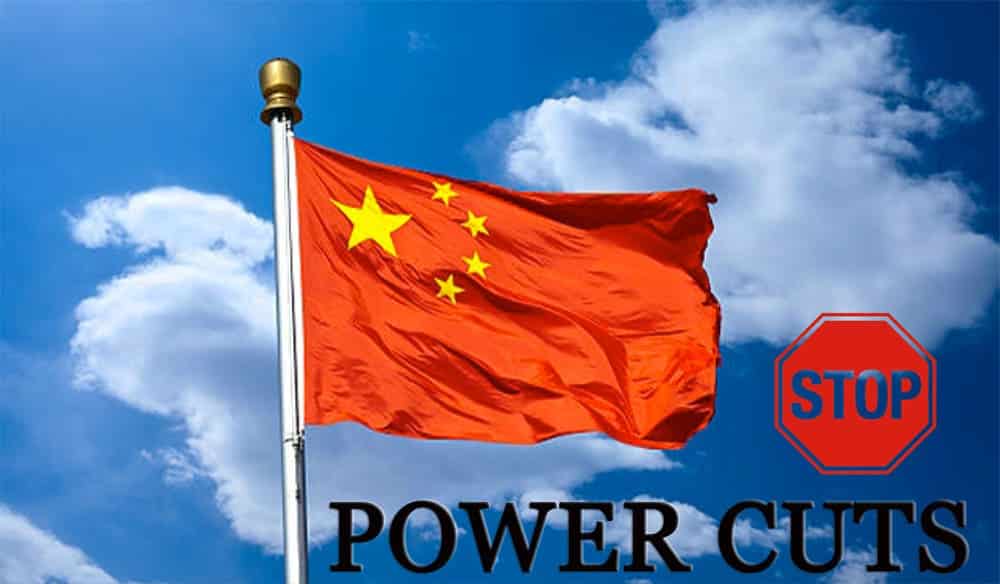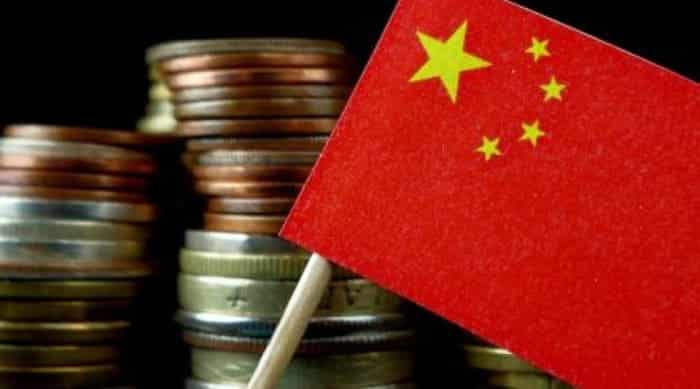
China has always been the world’s largest energy consumer, but now it is taking even bigger steps to reduce its dependence on fossil fuels.
The country’s government announced a new dual control of energy consumption policy last week. It aims to curb both economic growth and carbon emissions.
The most significant change is the move away from the previous 10% annual increase in coal production by 2020. With coal use capped at 4.2 billion metric tons per year instead of 4.3 billion as previously planned for this decade.
Due to the high energy consumption, the recent announcement of the new energy strategy by the Chinese government has set off a heated debate. The country is faced with an urgent. It needs to address the chronic problem of air pollution.
It also addresses its dependence on coal-fired power plants. They are major contributors to China’s greenhouse gas emissions.
What’s energy in the Chinese mind?

Energy is an essential material basis for human survival and development. Over the entire history of mankind, every significant step in the progress of human civilization.
It has been accompanied by energy innovations and substitutions. The development and utilization of energy have enormously boosted the development of the world economy and human society.
To control energy consumption and make it sustainable. China has implemented a dual system called Dual Control of Energy Consumption.
What is Dual Control?

Dual Control of Energy Consumption is a policy that China has implemented to control and reduce energy consumption. It means domestic consumers are required to use electricity, coal, liquefied natural gas (LNG), kerosene, and other fuels rationally to prevent waste.
Dual Control of Energy Consumption has dramatically reduced the country’s energy consumption and greenhouse gas emissions. The plan aims to improve China’s “dual control system” on energy consumption and energy intensity, or the amount of energy consumed per unit of GDP
So, factories will be fined if they fail to implement Dual Control. while consumers who violate policies can face fines or a temporary halt in new supplies.
What is Barometer of Regional Energy Consumption Intensity & Total Amount?
The “Barometer of Regional Energy Consumption Intensity & Total Amount” report is also known as “double control.” The double control policy provides a clear alert level of energy consumption intensity reduction and amount reduction.
Due to the barometer of 2021 semi-annual data shows, Guangdong Province, Fujian Province, Yunnan Province, Jiangsu Province, Zhejiang Province, Anhui Province, Sichuan Province, and other 12 regions still show a serious situation in terms of energy reduction and total energy consumption.
It means that more than half of the provinces failed to complete the double control target in the first half of the year.
So at least 10 provinces including the above-mentioned provinces have implemented measures to curtail power, suspend production or reduce production. Because of high energy consumption, we can see from the photo shows the total energy consumption is too much.
By 22% between 2005 and 2015, the country has already overachieved its 2020 target of reducing energy intensity by 18%.

Why should take action to Dual Control of Energy Consumption?
China’s energy intensity declined by more than 50% from 2005 to 2015, while its economy expanded at a rapid rate. Because of the unique characteristics of energy resources and their applications in production activities. They also have certain negative consequences.
The uncontrolled development of fossil fuels has brought about serious pollution to human beings as well as other living things. Thus, it is necessary for us to make due efforts to reduce the consumption of traditional energy in various ways.
China is a developing country with a large population but deficient resources. To attain sustainable economic and social development, it must take the path of conserving resources.

Restrictions on the use of electricity are not without warning. Earlier this year, Datang International, Guodian Power, and other 11 companies asked for price increases said their difficulty of one degree of electricity they make, 10cents they lost.
We all know that in China the electricity utility rates are capped. This mismatch has pushed power plants to the brink of financial collapse because higher coal prices have forced them to operate at a loss. Thermal plants were working at a loss, that’s not good for anybody.
“When coal prices are very high, what happens is that it’s not profitable for a lot of coal plants to generate electricity,” Myllyvirta says.
Let the coal-fired power plants have a short rest maybe is a good way.
Why is there not enough electricity to use?

Now thermal coal has tripled in price on some commodities exchanges. About 90% of coal used in China is domestically mined. But mining volumes from some of China’s northern provinces have dropped by as much as 17.7%. According to the respected Chinese financial magazine Caijing.
When the electricity reform started in 2015, coal prices were low and there was a surplus of electricity supply. The subsequent years, overlaid with changes in the economic environment, saw the priority goal of electricity reform to reduce prices.
During this process, even with supply-side reforms, coal prices are generally stable. But since this year, the prices have been rising, and the power conflicts have resurfaced. “Energy consumption shot up like crazy in the first half of the year.
Because of a very energy-intensive, industry-driven recovery from the COVID-19 lockdowns,” says Lauri Myllyvirta, lead analyst at the Centre for Research on Energy and Clean Air in Helsinki.
The answer begins with the pandemic. Someone will say, we should find another way to produce electricity in the future, not only with coal. Yes, the government is doing it. With the strong support of the government.
Wind power and photovoltaic power generation investment occupy the bulk of new energy investment. The proportion of coal in primary energy consumption fell to more than 60%. Although thermal power electricity still accounts for more than 70% of electricity generation.
When did China begin Dual Control of Energy Consumption?

As early as May, some factories in the wealthy southern manufacturing hub Guangdong province began shutting a few days a week. But the shortage seems to have seriously worsened more and more.
Dual Control of Energy Consumption since September 28, as reported by BofA Securities analysts in a note on power rationing and industrial production cuts in at least 20 provinces. It accounts for 71% of China’s industrial production.
Power curbs mostly affected manufacturers. Around Sept. 23 some cities in three northeastern Chinese provinces—Jilin, Heilongjiang, and Liaoning. They imposed restrictions on electricity use as the winter heating season started.
The government has also been encouraging energy-saving practices by funding research and the development of new technology for power conservation.
Some companies have begun to invest in renewable sources such as wind turbines or solar panels. On October 29th, China’s National Energy Administration said it will provide a subsidy.
What is the impact on China’s economic?

Under the policy of Dual control of energy consumption, the impact of the energy crisis on the Chinese economy is big. China is the world’s largest energy consumer and its growing economy has made Beijing rely on coal for almost 70% of the total electricity supply.
The impact of power curtailment on manufacturing while factories are running is estimated to cost the Chinese economy $150 billion alone in 2010.
Energy-intensive projects such as steel, aluminum, or chemicals will be impacted by power cuts. Because they require large amounts of electric input. In the past power cuts issue, other sectors were also severely affected: cement (-12%), paper-making (-29%), and nonferrous metals (-32%).
What are some of China’s solutions?
Some of China’s solutions include improving energy efficiency and shifting away from coal toward cleaner forms of energy such as renewables.
One way that they have done this is by funding research and development for new technology for power conservation. The National Development and Reform Commission laid out plans for tackling the power crunch. They include an orderly increase in coal imports.
To ensure power generation of coal and gas plants, and urging plants to prepare coal inventories before the winter to above “safety levels,” and allowing prices to reflect demand and costs. The country might consider raising power prices for industrial or even residential users.
“In the slightly longer term, the rational response would be to dramatically increase investment in clean energy,” said Myllyvirta.
China has set a goal of increasing the share of non-fossil fuels, such as wind and hydropower, in primary energy generation to 25% by 2030. But as those energies are highly reliant on weather conditions. And until related storage and transport infrastructure exists.
They will not be able to replace coal as a stable source for power generation in the foreseeable future. Lower hydropower production contributed to power shortages in southern China this year.

Some of China’s solutions include improving energy efficiency and shifting away from coal toward cleaner forms of energy such as renewables.
One way that they have done this is by funding research and development of new technology for power conservation. The National Development and Reform Commission laid out plans for tackling the power crunch. They include an orderly increase in coal imports.
To ensure power generation of coal and gas plants, and urging plants to prepare coal inventories before the winter to above “safety levels,” and allowing prices to reflect demand and costs. The country might consider raising power prices for industrial or even residential users.
“In the slightly longer term, the rational response would be to dramatically increase investment in clean energy,” said Myllyvirta.
China has set a goal of increasing the share of non-fossil fuels, such as wind and hydropower, in primary energy generation to 25% by 2030. But as those energies are highly reliant on weather conditions. And until related storage and transport infrastructure exists.
They will not be able to replace coal as a stable source for power generation in the foreseeable future. Lower hydropower production contributed to power shortages in southern China this year.
If you think this post is helpful, share it with your friends and leave a comment to tell us your thoughts. To learn more now, contact us or email info@yansourcing.wpcodemasters.com.
